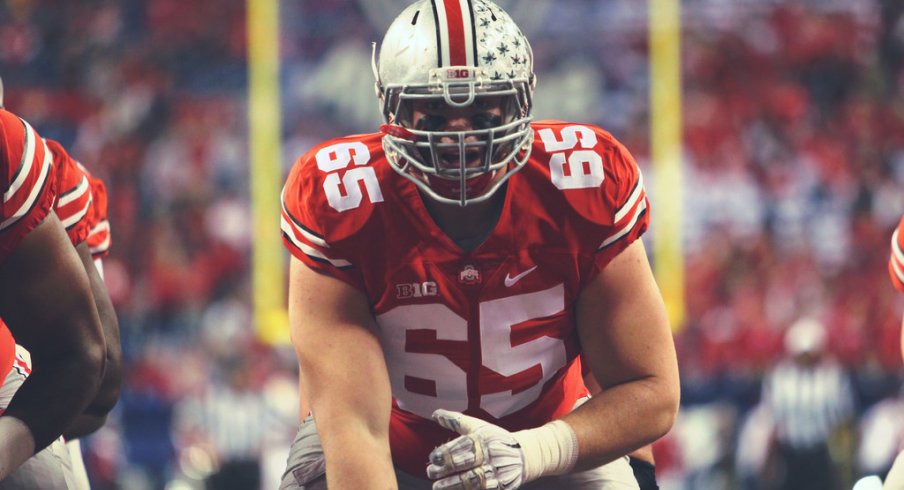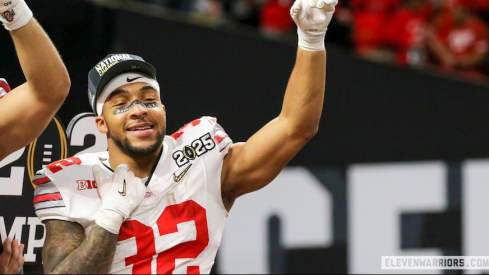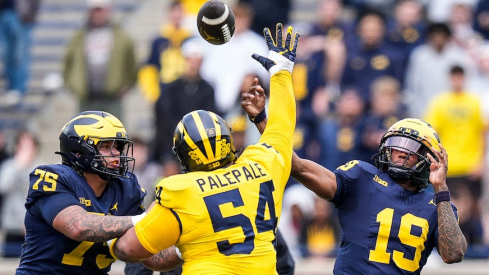Already regarded as one of the nation's top linemen, fifth-year senior Pat Elflein's job is about to get tougher. As one of only two returning starters on a line that powered Ohio State's offense last fall, Elflein is making the move from right guard to center this offseason, filling far more than a physical void.
Undoubtedly, the Central Ohio native will have to make some adjustments to his initial hand placement and footwork in addition to mastering the skill of snapping the ball in the Buckeyes' shotgun-based offense. But the biggest challenge for the new center will come before he sends the ball back to quarterback J.T. Barrett.
You've probably seen TV cameras focus on centers as they point things out with their off-hand before the snap, calling out this or that to teammates in either direction. The motions may look quick and simple, but their purpose is imperative to the success of any play.
In a matter of only a few seconds, Elflein will be tasked with making a number of observations and relaying what they mean to the play already called. To complicate the issue, the responsibilities can change based on an opponent's tendencies, field position, and of course the play call itself.
But in general, there are a few common steps that most centers at the pro and college levels are tasked with making. To give us an idea, we'll examine a simple Tight Zone-Option, the foundational concept of Urban Meyer's OSU playbook and often the first play taught in training camp.
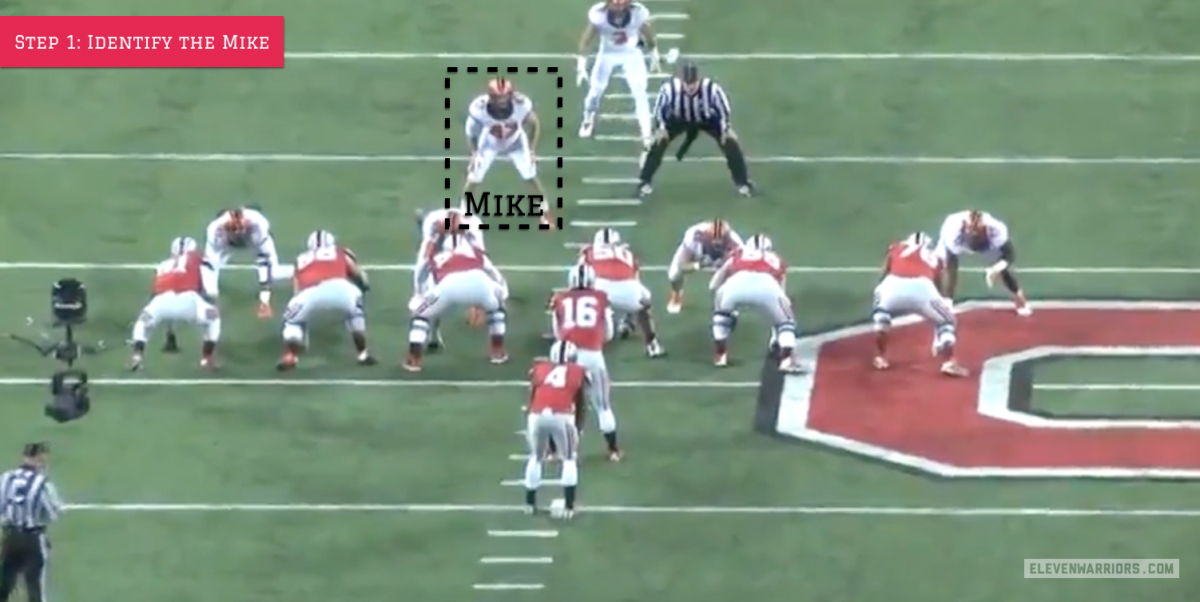
The MIKE (aka Middle) linebacker is called out before anything, setting a middle point from which the offense will base the defense's alignment. This player may not actually be the actual middle linebacker for the defense, but rather the linebacker lined up closest to the center, which informs many of the remaining steps.
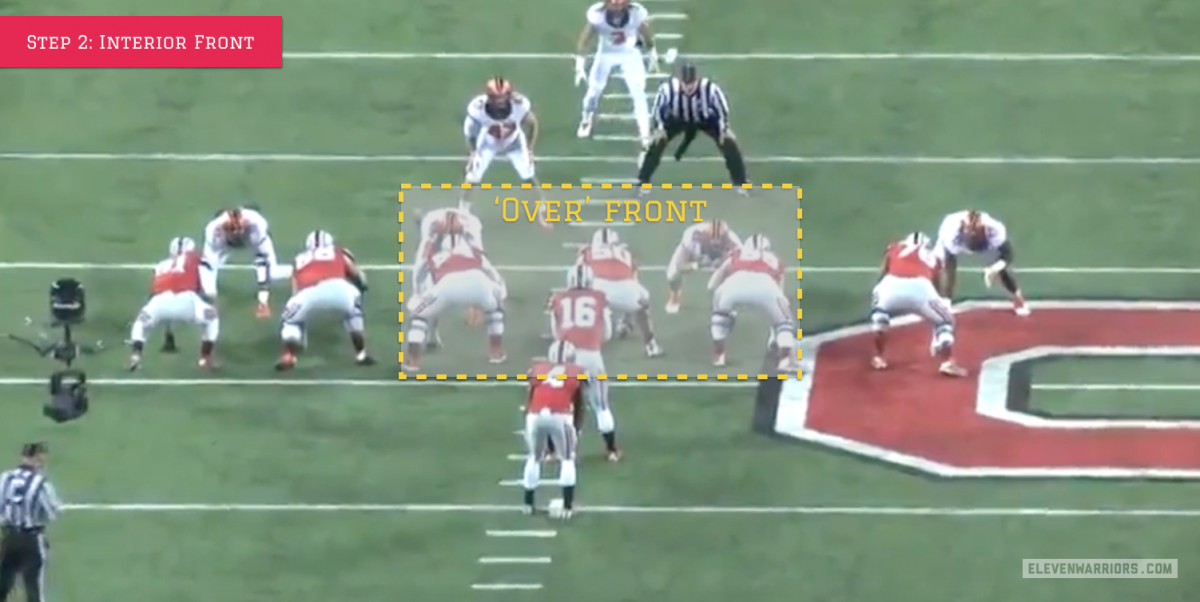
Along with that MIKE 'backer, the two inside defensive tackles make up the "interior" front, which is the center's next ID. By calling out which gap (if any) is covered between him and either guard, the center is informing the other linemen of the rules they'll be following on the play. With the tight end to the left in this instance and the nose guard in the 'A' gap to the center's right, the defense is in an 'Over' front.
Such 'rules' can affect everything from the direction and depth of a player's first step off the line to the direction of their eyes downfield. These little nuances are implemented in practice and are critical to the success of a game plan that often features the same basic play concepts from week to week.
The Buckeyes have had one of the most diverse, yet dominant running games in the nation since Meyer took the helm in 2012, thanks in no small part to the capacity of his offensive line to identify what their opponents are doing and adjusting properly to it. This ability turns a group of individual talents into a true unit and separates Ohio State's effectiveness from other programs that produce talented players without achieving the same results on the field.
As a fifth-year player, Elflein should know and be comfortable with any new blocking adjustments thrown his way. But with his move to center, his cognitive responsibilities will be expanded to now include the defensive backfield.
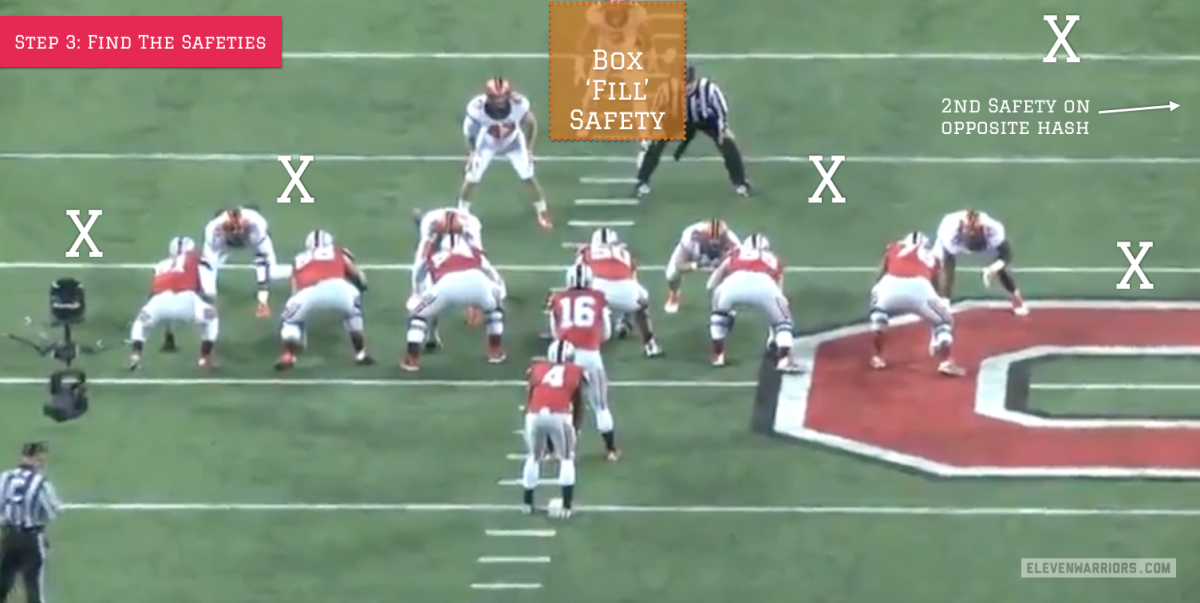
Like we've seen in the ongoing chess match between the Buckeye offense and the 'Quarters' defense of Michigan State, safeties can have a great effect in slowing down the running game. The first step to keeping them from doing so is to know where they are.
In the example here, the two safeties are in a 'Quarters' look with each lined up on the hash marks at about nine yards deep. With only one linebacker in the box, this signals that the safety in view will have to be accounted for once the ball is snapped.
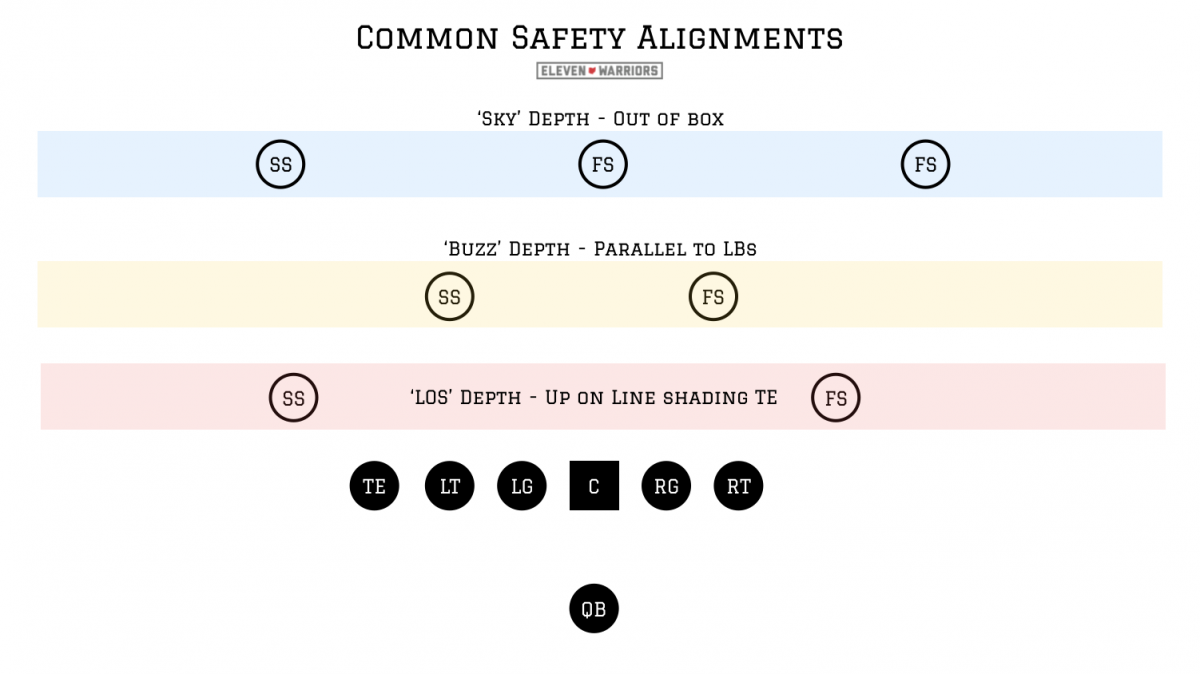
While safeties tend to roam before the snap, the center will look to see if they're in any of the positions located in the diagram above. If they're in 'Sky' depth, ten yards or more downfield, then the center doesn't need to worry about them. But if they line up at linebacker depth or up near the line, it will be Elflein's job to call it out, likely triggering an audible from the QB.
For this reason, centers will often attend 7-on-7 drills with the skill players early in the year, as the opportunity to otherwise see the field without the clutter of all the other big guys in front of them is rare. Even though the different alignments and coverages may not directly affect a blocking scheme, it helps to signal where potential blitzers may come from, which obviously can play a major factor in how an offensive line must react.
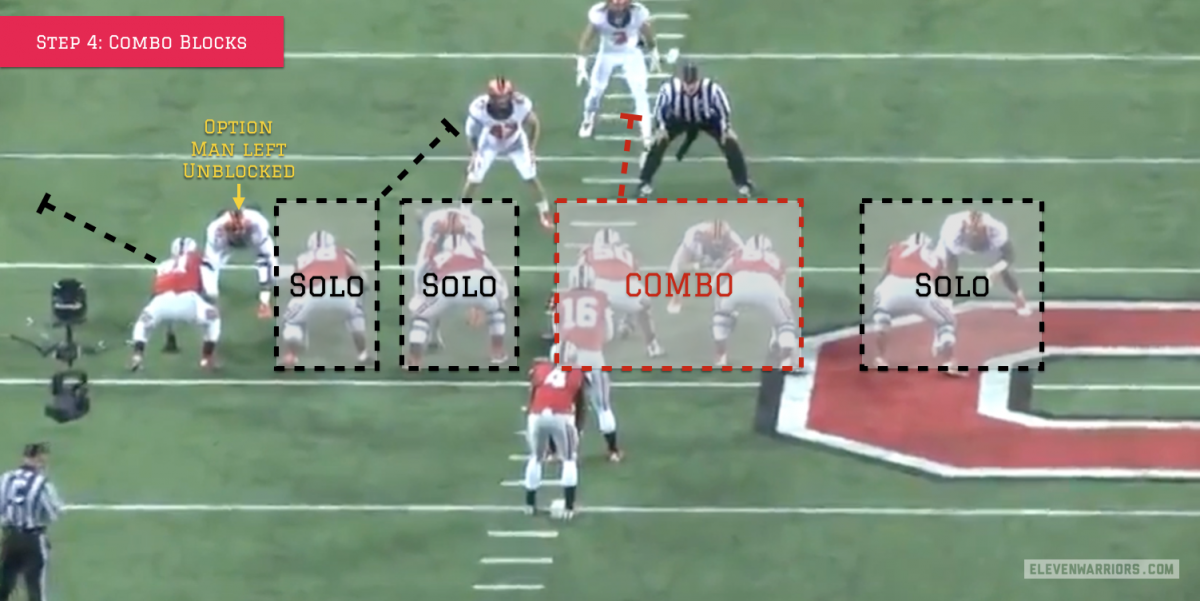
Finally, once the entire landscape has been fully surveyed, the line will determine where any combination blocks may be needed. Not only will the center and right guard initially double-team the nose guard in this instance, they'll look to work toward that oncoming safety who fills the box like a linebacker would. The remaining linemen each take on their own individual assignments, leaving Barrett to execute a perfect option read of the unblocked defensive end before busting outside for a big gain.
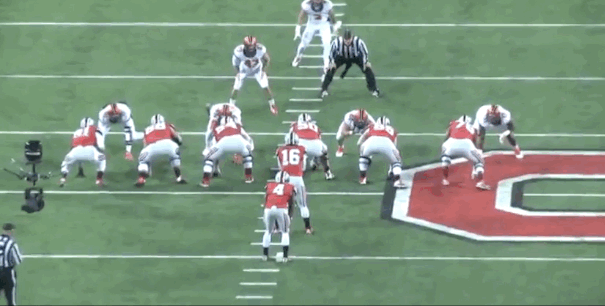
As mentioned earlier, all this work goes into what is essentially a very simple play. Barrett is praised on the telecast for making the correct decision of keeping rather than handing off, but he would've gone nowhere without the help of the six blockers in front of him. But that group doesn't do their job without the unseen (and unheard) efforts of the center before he does his most important job.
